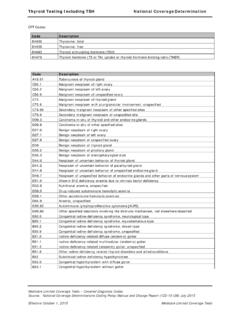Transcription of Ambulance Services – Commercial Coverage Determination ...
1 Ambulance Services Page 1 of 7 UnitedHealthcare Commercial Coverage Determination Guideline Effective 08/01/2020 Proprietary Information of UnitedHealthcare. Copyright 2020 United HealthCare Services , Inc. UnitedHealthcare Commercial Cover a ge Deter mina tion Guideline Ambulance Services Guideline Number: Effective Date: August 1, 2020 Instructions for Use Table of Contents Page Coverage Rationale .. 1 Documentation Requirements .. 3 Definitions .. 3 Applicable Codes .. 4 References .. 6 Guideline History/Revision Information .. 6 Instructions for Use .. 6 Coverage Rationale Indications for Coverage Air Ambulance As a general guideline, when it would take a ground Ambulance 30-60 minutes or more to transport a member whose medical condition at the time of pick-up required immediate and rapid transport due to the nature and/or severity of the member s illness/injury, air transportation may be appropriate.
2 Air Ambulance transportation should meet the following criteria: The member s destination is an acute care hospital; and The member s condition is such that the ground Ambulance (basic or advanced life support) would endanger the member s life or health; or Inaccessibility to ground Ambulance transport or extended length of time required to transport the member via ground Ambulance transportation could endanger the member; or Weather or traffic conditions make ground Ambulance transportation impractical, impossible, or overly time consuming Emergency Ambulance (Ground, Water, or Air) Coverage includes Emergency Ambulance transportation (including wait time and treatment at the scene) by a licensed Ambulance service from the location of the sudden illness or injury, to the nearest hospital where Emergency Health Care Services can be performed. The following Emergency Ambulance Services are covered: Ground Ambulance or air Ambulance transportation requiring basic life support or advanced life support Supplies that are needed for advanced life support or basic life support to stabilize a member s medical condition Treatment at the scene (paramedic Services ) without Ambulance transportation Wait time associated with covered Ambulance transportation Transportation to a hospital that provides a required higher level of care that was not available at the original hospital Non-Emergency Ambulance (Ground or Air) Between Facilities Coverage includes non-Emergency Ambulance transportation by a licensed Ambulance service (either ground or air Ambulance , as UnitedHealthcare determines appropriate) between facilities only when the transport meets one of the following.
3 Community Plan Policy Ambulance Services Medicare Advantage Coverage Summary Ambulance Services Ambulance Services Page 2 of 7 UnitedHealthcare Commercial Coverage Determination Guideline Effective 08/01/2020 Proprietary Information of UnitedHealthcare. Copyright 2020 United HealthCare Services , Inc. From an out-of-Network Hospital to the closest Network Hospital when Covered Health Care Services are required To the closest Network Hospital or facility that provides the required Covered Health Care Services that were not available at the original Hospital or facility From a Short-Term Acute Care Facility to the closest Network Long-Term Acute Care Facility (LTAC), Network Inpatient Rehabilitation Facility, or other Network Sub-Acute Facility where the required Covered Health Care Services can be delivered When the member s condition requires treatment at another facility and another mode of transportation would endanger the member s medical condition The applicable benefit level for eligible non-Emergency Ambulance transportation depends on the member pick-up location (origin) as follows.
4 If the member is inpatient and is transported from a hospital to another hospital or inpatient facility, Coverage levels for these Ambulance Services may vary. If the member is in a sub-acute setting and is transported to an outpatient facility and back (outpatient hospital, outpatient facility, or physician s office), these Ambulance Services are covered under the benefits that apply to that sub-acute setting. For example, if the member is at a Skilled Nursing Facility, the Ambulance transport to an outpatient facility (dialysis facility or radiation whether or not it is attached to a hospital) and back is covered under the Skilled Nursing Facility/Inpatient Rehabilitation Facility Services section of the COC. Pre-Service Notification Requirements for Non-Emergency Ambulance If UnitedHealthcare initiates the non-Emergency Ambulance transportation, member notification is not required. If UnitedHealthcare does not initiate the non-Emergency Ambulance transportation, certain plans may require the member or the provider to call in for notification.
5 Provider notification requirements are not addressed by this document. Out-of-Network Ambulance (Emergency) If the Ambulance transportation is covered, the benefit level for out-of-Network Emergency Ambulance (ground, water, or air) is covered at the Network level of deductible and coinsurance. Coverage Limitations and Exclusions The following Services are not eligible for Coverage : Ambulance Services from providers that are not properly licensed to be performing the Ambulance Services rendered. Air Ambulance transportation that does not meet the covered indications in the Air Ambulance criteria listed above. Non- Ambulance transportation. Non- Ambulance transportation is not covered even if rendered in an Emergency situation. Examples include but are not limited to: o Commercial or private airline or helicopter o A police car ride to a hospital o Medi-van or wheel-chair van transportation o Taxi ride, bus ride, rideshare Services such as Lyft and Uber, etc.
6 Ambulance transportation when other mode of transportation is appropriate. Except as indicated under the Indications for Coverage section above, Ambulance Services when transportation by other means would not endanger the member s health are not covered. Ambulance transportation to a home, residential, domiciliary or custodial facility is not covered. Ambulance transportation that violates the notification criteria listed in the Indications for Coverage section above. Ambulance transportation for member convenience or other miscellaneous reasons for member and/or family. Examples include but are not limited to: o Member wants to be at a certain hospital or facility for personal/preference reasons o Member is in foreign country, or out of state, and wants to come home for a surgical procedure or treatment (this includes those recently discharged from inpatient care) o Member is going for a routine service and is medically able to use another mode of transportation o Member is deceased and family wants transportation to the coroner s office or mortuary Ambulance transportation deemed not appropriate.
7 Examples include but are not limited to: o Hospital to home o Home to physician s office Ambulance Services Page 3 of 7 UnitedHealthcare Commercial Coverage Determination Guideline Effective 08/01/2020 Proprietary Information of UnitedHealthcare. Copyright 2020 United HealthCare Services , Inc. o Home ( , residence, nursing home, domiciliary or custodial facility) to a hospital for a scheduled service If the member is at a Skilled Nursing Facility/Inpatient Rehabilitation Facility and has met the annual day/visit limit on Skilled Nursing Facility/Inpatient Rehabilitation Facility Services , Ambulance transports (during the non-covered days) are not eligible. Documentation Requirements Benefit Coverage for health Services is determined by the member specific benefit plan document and applicable laws that may require Coverage for a specific service. The documentation requirements outlined below are used to assess whether the member meets the clinical criteria for Coverage but do not guarantee Coverage of the service requested.
8 HCPCS Codes* Required Clinical Information Air Ambulance and Non-Emergency Transport (Ground or Air) A0430 A0431 A0435 A0436 Medical notes documenting all of the following: Date of service Ordering physician s name and phone number (if request is made to Air Ambulance provider) Physician order and documentation by explaining the reason for Air Ambulance transport Any additional equipment or personnel needed for transport Member s diagnosis and chief complaint Members current condition (clinical summary) including: o Co-morbidities o Current functional limitations o Description of members inpatient (IP) stay and progress if applicable Where member is traveling from (facility name & contact name/phone number) Where member is traveling to (facility name & contact name/phone number) Mileage (one-way) for transport including air mileage and land mileage for transport *For code descriptions, see the Applicable Codes section.
9 Definitions The following definitions may not apply to all plans. Refer to the member specific benefit plan document for applicable definitions. Covered Health Care Service(s): Health care Services , including supplies or Pharmaceutical Products, which UnitedHealthcare determines to be all of the following: Provided for the purpose of preventing, evaluating, diagnosing or treating a Sickness, Injury, Mental Illness, substance-related and addictive disorders, condition, disease or its symptoms. Medically Necessary. Described as a Covered Health Care Service in the Certificate of Coverage under Section 1: Covered Health Care Services and in the Schedule of Benefits. Not excluded in the Certificate of Coverage under Section 2: Exclusions and Limitations. Emergency: A medical condition manifesting itself by acute symptoms of sufficient severity (including severe pain) so that a prudent layperson, who possesses an average knowledge of health and medicine, could reasonably expect the absence of immediate medical attention to result in: Placing the health of the Covered Person (or, with respect to a pregnant woman, the health of the woman or her unborn child) in serious jeopardy; Serious impairment to bodily functions; or Serious dysfunction of any bodily organ or part Emergency Health Care Services : Services that are required to stabilize or begin treatment in an Emergency.
10 Emergency Health Care Services must be received on an outpatient basis at a Hospital or Alternate Facility. Ambulance Services Page 4 of 7 UnitedHealthcare Commercial Coverage Determination Guideline Effective 08/01/2020 Proprietary Information of UnitedHealthcare. Copyright 2020 United HealthCare Services , Inc. Long-Term Acute Care Facility (LTAC): A facility or Hospital that provides care to people with complex medical needs requiring long-term Hospital stay in an acute or critical setting. Medically Necessary: Health care Services that are all of the following as determined by UnitedHealthcare or our designee: In accordance with Generally Accepted Standards of Medical Practice. Clinically appropriate, in terms of type, frequency, extent, service site and duration, and considered effective for your Sickness, Injury, Mental Illness, substance-related and addictive disorders, disease or its symptoms.
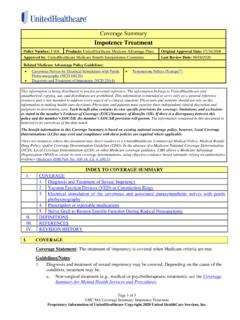
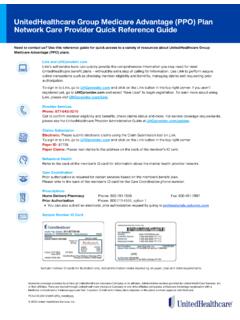
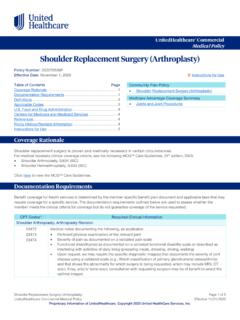
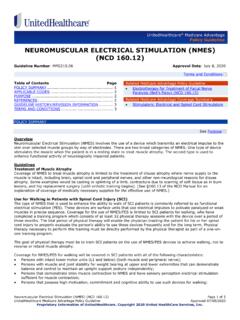
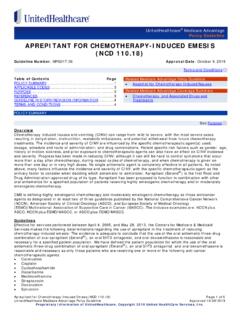
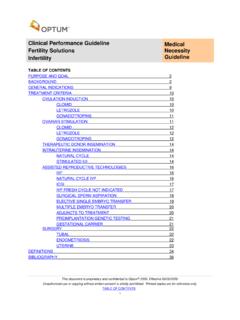
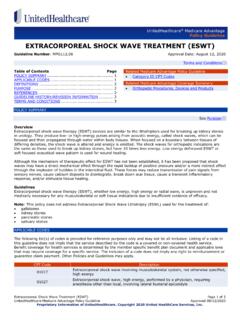
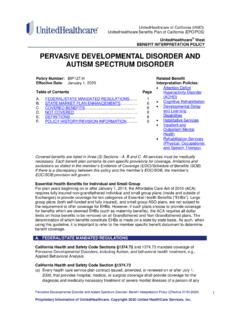
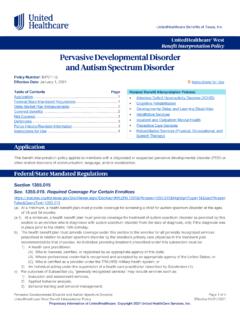
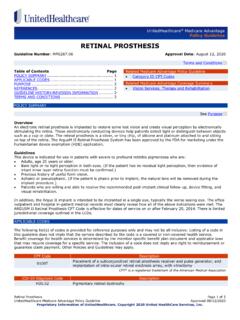

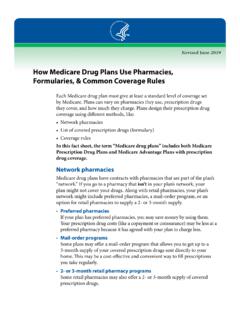


![Important Notice from [Insert Name of Entity] About Your ...](/cache/preview/2/4/a/f/b/6/3/c/thumb-24afb63ca28b6e04ac534dd972d886e1.jpg)
